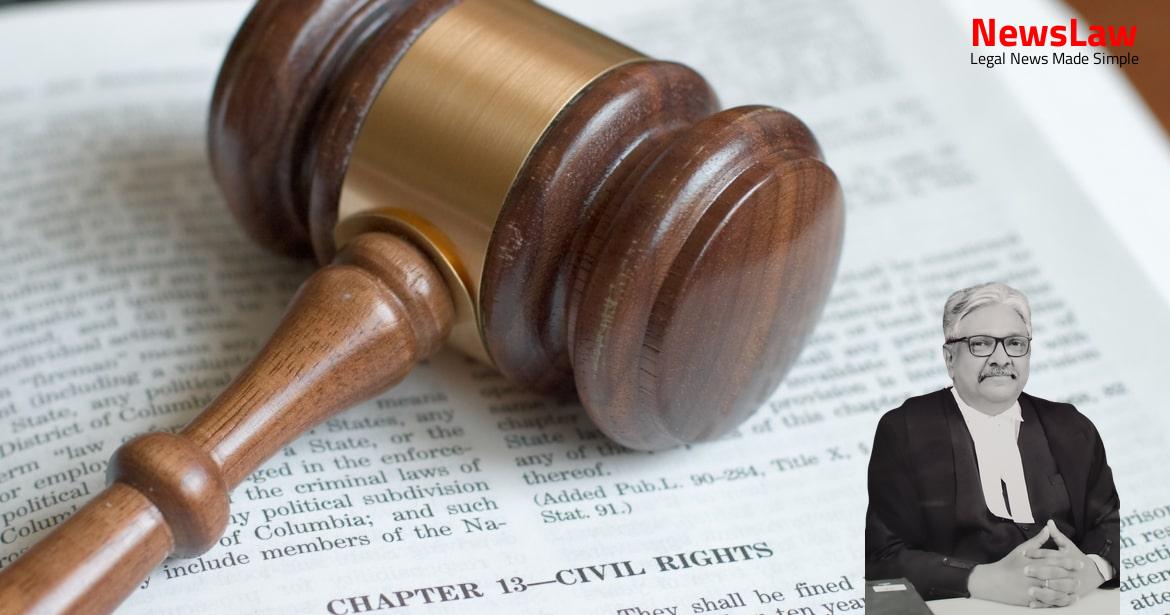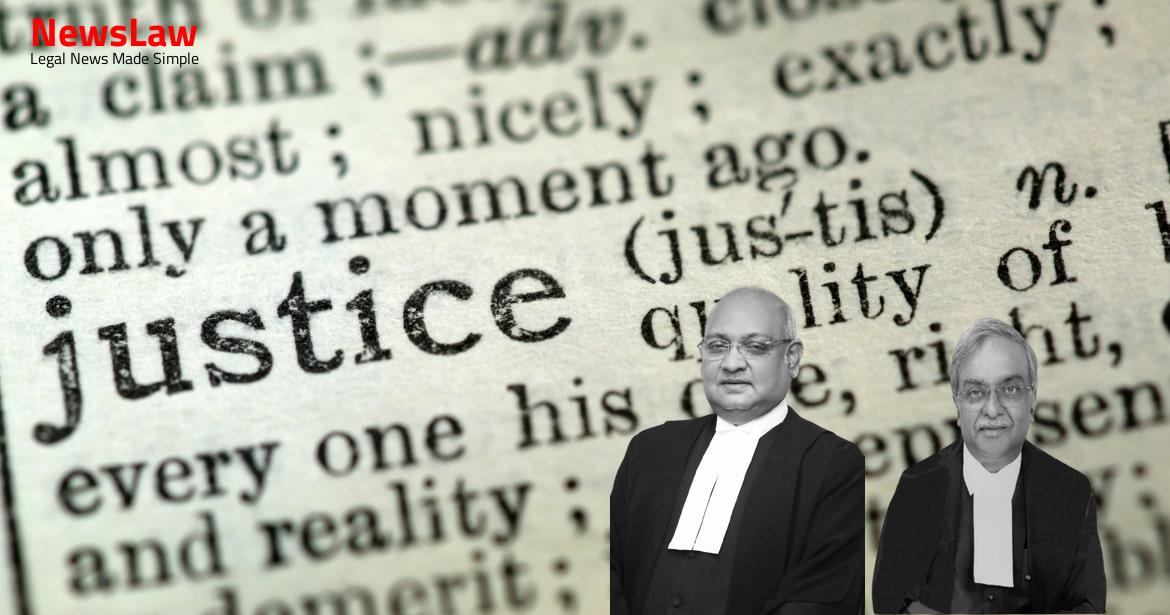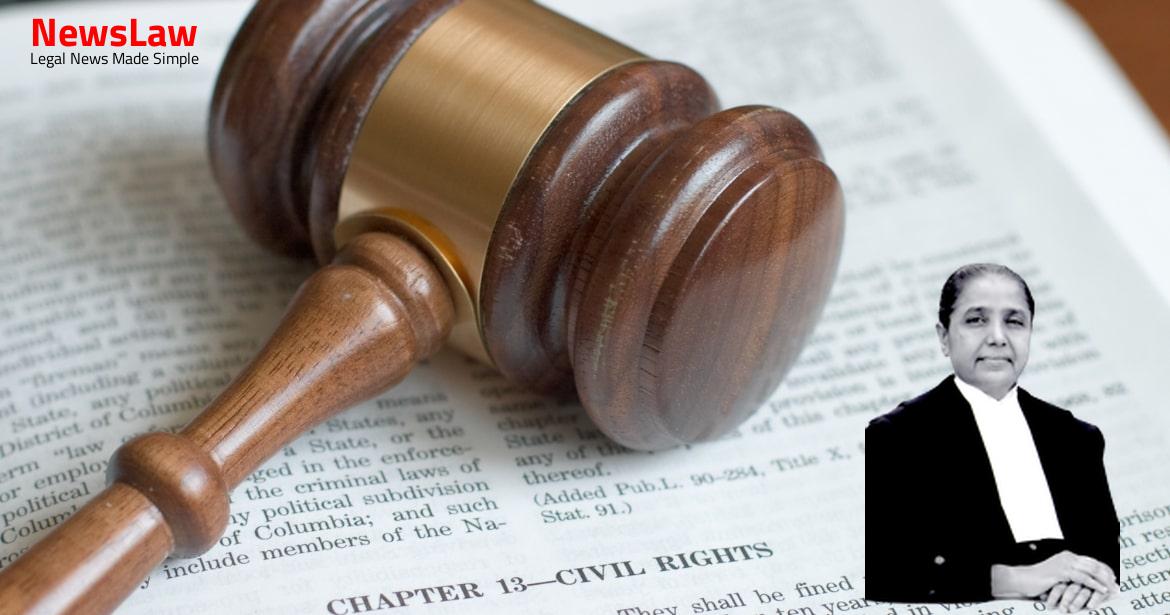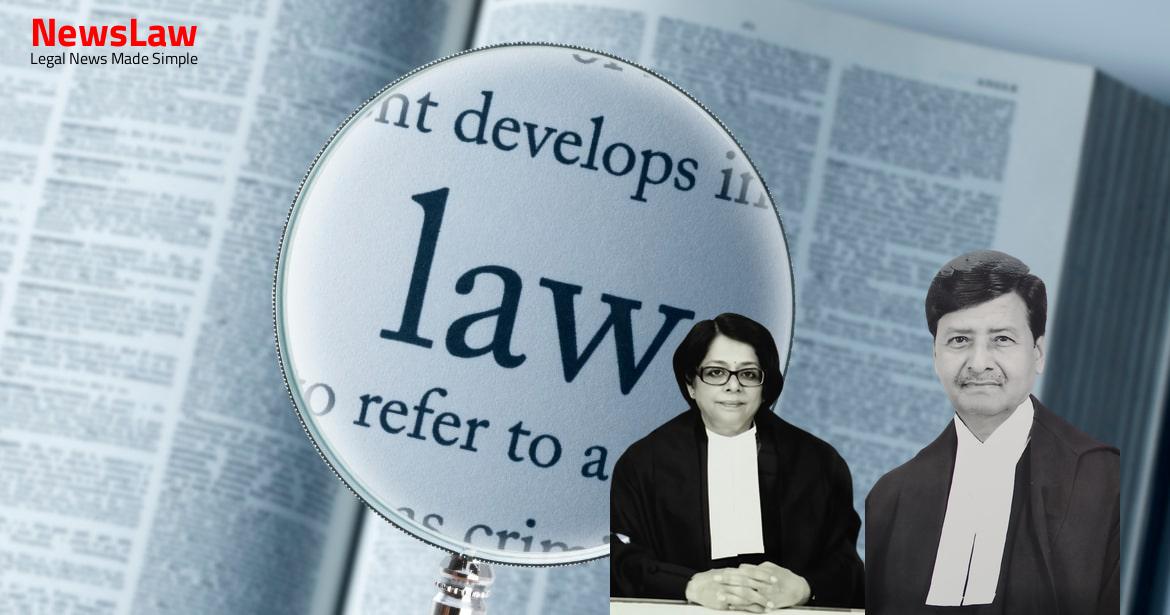Delve into the intricate legal analysis conducted by the court regarding the interpretation of exclusion clauses in insurance contracts. The case delves into the application of specific provisions and their implications in liability cases, shedding light on the complexities of legal language and its impact on contractual obligations and insurance coverage.
Facts
- The accident took place on 22.11.2007 involving a Porsche belonging to the respondent-Company, which was insured with the appellant.
- The National Consumer Disputes Redressal Commission (NCDRC) issued an Order related to the accident.
- The driver of the car pleaded guilty voluntarily and was convicted for the offence under Section 279 IPC.
- The driver was sentenced to pay a fine of Rs.1,000/- in default of 10 days of simple imprisonment.
- The driver’s plea for leniency as it was his first offence was taken into consideration during sentencing.
- The driver, Aman Bangia, was involved in the accident and brought out of the car with assistance from law enforcement personnel.
- An FIR was filed under Section 279/427 of the IPC and Section 185 of the Motor Vehicles Act in relation to the accident.
- Evidence presented by the investigators affirmed that the accident was a result of rash and negligent driving by the driver.
- The car belonging to the respondent-Company was completely damaged in the accident.
- The driver was found to be under the influence of alcohol at the time of the accident.
- The State Commission rejected the complaint of the respondent due to evidence of the driver consuming liquor and being under its influence.
- The NCDRC disagreed with the State Commission’s decision, stating there was no proof that the driver was under the influence of intoxicating liquor as per the Exclusion Clause.
- The NCDRC mentioned the case of Ranjit Kaur where even with a liquor quantity of 86.2 mg in the blood sample, the driver was not considered intoxicated.
- In the current case, no evidence was presented regarding the quantity of liquor in the driver’s blood.
- NCDRC allowed the appeal, overturning the State Commission’s order and instructed the appellant to assess and compensate the respondent for their loss.
Also Read: Electoral Malpractices in Mayor Election
Issue
- The issue in this Appeal is whether the NCDRC correctly held that the appellant cannot claim immunity under Clause 2c of the Contract of Insurance.
- Clause 2c stipulates that the appellant is not liable if the person driving the vehicle was under the influence of intoxicating liquor or drugs.
- The NCDRC’s decision revolves around the interpretation and application of Clause 2c in this case.
- The key question is whether the appellant can rely on this clause to avoid liability in the situation at hand.
Also Read: Balancing Power and Transparency: Electoral Bonds Struck Down, Disclosure Mandated
Arguments
- The burden of proof regarding the quantity of alcohol in the blood of the driver was wrongly placed on the Insurer.
- Mere presence of alcohol above prescribed limits is not conclusive proof of intoxication; specific clinical picture of alcohol intoxication depends on various factors.
- No evidence of nexus between death caused by electric shock and consumption of liquor.
- Argument made by the learned Counsel for the appellant emphasizing the high speed of the vehicle, manner of accident, and the driver smelling of alcohol to attract the Exclusion Clause.
- Case reference to LIC of India & Anr. Vs. Ranjit Kaur III where the quantity of alcohol in the blood was found but not deemed adequate proof of intoxication at the time of death.
- Reference to V. Kishan Rao v. Nikhil Super Speciality Hospital highlighting that complaints before Consumer Fora are tried summarily without the full application of Evidence Act.
- Issue raised regarding the failure to ascertain the alcohol level in the driver’s blood despite an Investigator being present at the scene; questioning the correctness of the declaration made.
- Respondent’s argument counters the appellant’s apprehension about the insurer’s inability to prove the level of alcohol.
- The Investigator’s Report was highlighted by the respondent’s counsel, showing the opportunity for interaction with relevant parties like the driver, police officers, and doctors.
- The Investigator’s presence in the early morning indicates a chance to gather crucial information.
- Medical literature was used to determine the deceased’s intoxication level, making him ineligible for double accident policy benefits.
Also Read: Recall of Resolution Plan Approval: Legal Analysis
Analysis
- Section 203(2) of the Motor Vehicles Act deals with situations where a vehicle is involved in an accident in a public place.
- If a police officer suspects that the person driving the vehicle at the time of the accident had alcohol in their blood, they may require a specimen of breath for a breath test.
- Section 6(6) of the Act defines ‘unfit to drive through drink or drugs’ as being under the influence to the extent of being incapable of having proper control of a motor vehicle.
- The Road Traffic Act of 1962 specifies limits for alcohol in the blood for driving, set at 80 mg in 100 ml of blood.
- The Road Safety Act of 1988 mandates providing a specimen of blood for a laboratory test if the breath test indicates alcohol or if the person refuses the breath test.
- Sections 3A, 4, and 5 of the Act provide penalties for causing death by careless driving under the influence of drink or drugs.
- Section 185 of the Motor Vehicles Act penalizes driving under the influence of alcohol or drugs, with specific limits for alcohol concentration in the blood.
- Sections 203 and 204 deal with breath and laboratory tests for alcohol in case of suspected driving under the influence.
- The Act imposes strict penalties for driving under the influence to ensure road safety.
- Rule 27-A of the Motor Vehicles Rules prohibits driving a motor vehicle in a public place when intoxicated.
- The charge of being under the influence of liquor was contested by the accused in the case.
- An article by W.W. Thornton discussed the criteria for being under the influence of intoxicating liquors as per an insurance policy.
- The case referenced laws in the UK regarding alcohol in vehicles and early interpretations by the Bombay High Court.
- The principles of Section 106 of the Evidence Act were discussed in relation to the case.
- Different legal provisions in various countries regarding driving under the influence of alcohol were compared.
- The need for specified alcohol levels in the blood for offense under the Motor Vehicles Act, 1988 was highlighted.
- A case in Scotland regarding driving after consumption of alcohol was referenced.
- The Court examined the distinction between being under the influence of liquor and being intoxicated.
- Various legal cases and interpretations were cited to determine the legal significance of being under the influence of intoxicating liquor.
Case Title: IFFCO TOKIO GENERAL INSURANCE COMPANY LTD. Vs. PEARL BEVERAGES LTD. (2021 INSC 247)
Case Number: C.A. No.-001526-001526 / 2021



